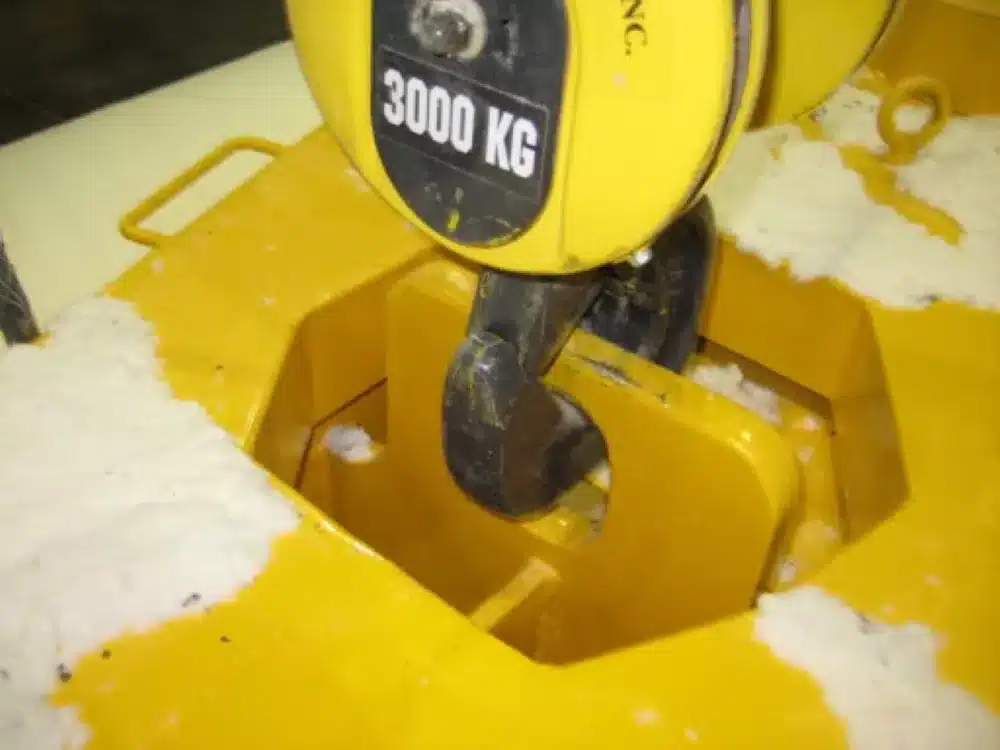 March 20, 2024
March 20, 2024
Companies typically invest in crane scales to enhance safety measures, safeguarding materials, factories, and workers from the dangers of handling heavy materials without knowing their proper weight.
However, merely having a crane scale in your workplace and overlooking the correct installation methods, usage, and maintenance can also pose risks (quite literally).
Therefore, today, you will discover the importance of implementing safety precautions when handling crane scales and the best practices for doing so.
Importance of Accurate Lifting and Weighing in Industrial Settings
Versatile and robust portable crane scales serve as the linchpin in numerous industries. Their primary function is simple yet indispensable: accurately weighing heavy loads during lifting operations. Whether measuring materials in mining excavations, monitoring payloads in oil & gas extraction, or optimizing production in agricultural settings, crane scales provide the vital data needed for informed decision-making and operational efficiency.
Common Risks Associated with Crane Lifting Weight Scale Usage
While indispensable, using crane lifting scales comes with inherent risks. Understanding and mitigating these risks is paramount to ensuring personnel safety and operations integrity.
1. Overloading and Structural Integrity
- Overloading occurs when the weight applied to the overhead crane weighing scale exceeds its maximum capacity, potentially leading to equipment failure and structural damage.
- Excessive loads can strain the crane’s components, such as hooks, cables, and lifting mechanisms, compromising their integrity and posing safety hazards.
2. Electrical Hazards
- Crane weight scales typically incorporate electrical components for measurement and data transmission.
- Electrical hazards may arise from damaged cables, faulty connections, or inadequate grounding, leading to the risk of electric shocks, fires, or equipment malfunction.
3. Environmental Stressors
- Outdoor operations expose crane scales to environmental factors such as extreme temperatures, moisture, dust, and corrosive substances.
- Exposure to these elements can degrade equipment performance over time, increasing the likelihood of malfunctions and safety incidents.
4. Inadequate Operator Training for the Lifting and Weighing System
- Insufficient training for crane scale operators can result in improper usage, misinterpretation of data, and safety oversights.
- Operators must be adequately trained to understand equipment functions, safety protocols, and emergency procedures to mitigate risks effectively.
5. Incorrect Installation and Calibration
- Improper installation and calibration of crane scales can lead to inaccurate weight measurements and compromised safety.
- Ensuring correct installation and periodic calibration is essential for maintaining accuracy and reliability during operations.
6. Equipment Malfunction
- Like any machinery, crane lifting scales are susceptible to wear, tear, and technical failures over time.
- Malfunctions such as sensor errors, display issues, or mechanical failures can jeopardize the safety and efficiency of lifting operations.
7. Poor Maintenance Practices
- Neglecting regular maintenance checks and servicing can result in equipment deterioration and an increased risk of failure.
- Routine inspections, lubrication, and parts replacement are essential for prolonging the lifespan of crane weight scales and ensuring safe operation.
8. Lack of Clear Communication
- Inadequate communication between crane operators, riggers, and other personnel involved in lifting operations can lead to misunderstandings and safety hazards.
- Clear communication protocols, including standardized signals and procedures, are crucial for coordinating lifting activities and preventing accidents.
Safety Precautions When Using Portable Crane Scales
Adhering to strict safety precautions is imperative to mitigate the risks mentioned above and ensure safe and efficient operations. Here are five essential precautions to consider:
Proper Installation and Calibration
- Ensure that crane scales are securely installed and calibrated according to manufacturer specifications before use.
- Regularly inspect and recalibrate equipment to maintain accuracy and reliability.
Regular Maintenance Checks
- Establish a comprehensive maintenance schedule, including routine inspections and servicing.
- Address any signs of wear, damage, or malfunction promptly to prevent accidents.
Training and Certification for Operators
- Provide training for all the personnel responsible for operating overhead crane weighing scales.
- Ensure operators are familiar with equipment functions, safety protocols, and emergency procedures.
Crane Scale Weight Limits
- Exceeding the weight limits specified by the crane scale manufacturer poses a significant risk to both personnel and equipment.
- Operators must adhere to weight limits to prevent overloading, structural damage, and potential accidents during lifting operations.
Proper Load Securement
- Ensuring proper load securement is essential to prevent the load from shifting or falling during lifting operations.
- Using appropriate rigging equipment, such as slings, chains, or straps, and properly securing the load to the crane hook minimizes the risk of accidents and injuries.
Best Practices for Safe Operation
Maintaining a safe working environment while utilizing crane scales requires adherence to best practices:
Pre-Lift Inspections
- Conduct thorough pre-lift inspections to assess equipment condition and verify load stability.
- Address any issues or concerns before proceeding with lifting operations.
Load Distribution and Center of Gravity Awareness
- Distribute loads evenly and accurately to prevent overloading and maintain stability.
- Maintain awareness of the load’s center of gravity to ensure safe lifting and maneuvering.
Communication Protocols
- Establish clear communication channels between operators, riggers, and other personnel involved in lifting operations.
- Implement standardized signals or procedures to relay crucial information effectively.
Portable crane lifting scales are indispensable allies in lifting and weighing tasks, and when used correctly, they make the lifting of heavy materials safer.
However, it is always important to remain careful and adhere to safety protocols when using them as well.
By understanding common risks, implementing stringent safety precautions, and embracing best practices, industries can safeguard their operations, protect personnel, and ensure smooth and successful outcomes.
Massload’s Crane Scales Portfolio
We specialize in designing and manufacturing high-quality standard and customized crane scales for the construction, lifting, and hoisting industries.
Contact Massload for More Information About Our Overhead Crane Weighing Scale Systems
If you want to learn more about which overhead crane weighing scale best suits your application, get to know our products, or talk to one of our technical salespeople, contact us today!


